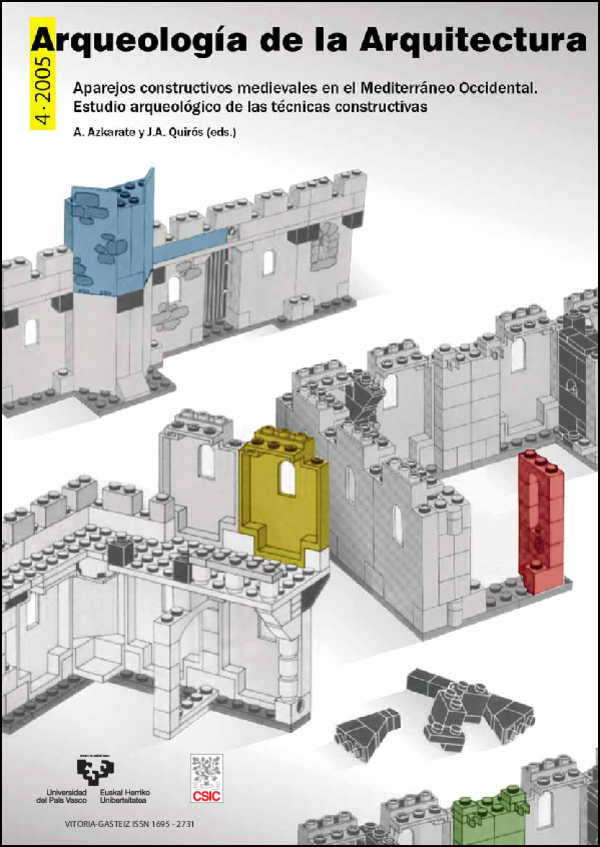Tecniche costruttive e forme di potere nella Toscana sud-occidentale (secc. VIII-XIV)
DOI:
https://doi.org/10.3989/arq.arqt.2005.75Keywords:
building techniques, wooden and masonry building, masonry workshop organizationAbstract
This paper tells about the analysis of the building techniques of elevations inferred from data obtained in extensive projects of archaeological research executed in western Tuscany's rural field from half '90s of last century to present. The text looks over the changes from wooden building trade related to the first high rise habitants in VIIth-VIIIth century, until the pattern settlements in the second half of VIIIth and XIth centuries, characterized by the first use of masonry and the presence of expert master builders. The more complex organization of the building workshops for castles of the XIth and XIIth centuries in relation with the liege lord's rising politic abusive authority is explained in the following part. The subsequent formation of new suburbs between the XIIIth and the XIV centuries is characterized by a different way of use of building techniques, often founded over pre-existing castles, linked to local council, up to the political and economical influence of Pisa in this territory.
Downloads
Downloads
Published
How to Cite
Issue
Section
License
Copyright (c) 2005 Consejo Superior de Investigaciones Científicas (CSIC) - Universidad del País Vasco/Euskal Herriko Unibertsitatea (UPV/EHU)

This work is licensed under a Creative Commons Attribution 4.0 International License.
© CSIC. © UPV/EHU. Manuscripts published in both the print and online versions of this journal are the property of Consejo Superior de Investigaciones Científicas and Universidad del País Vasco/Euskal Herriko Unibertsitatea, and quoting this source is a requirement for any partial or full reproduction.
All contents of this electronic edition, except where otherwise noted, are distributed under a Creative Commons Attribution 4.0 International (CC BY 4.0) licence. You may read here the basic information and the legal text of the licence. The indication of the CC BY 4.0 licence must be expressly stated in this way when necessary.
Self-archiving in repositories, personal webpages or similar, of any version other than the final version of the work produced by the publisher, is not allowed.















